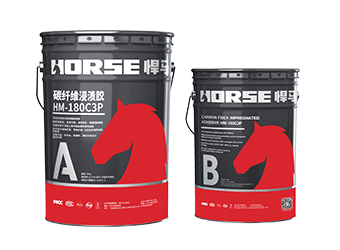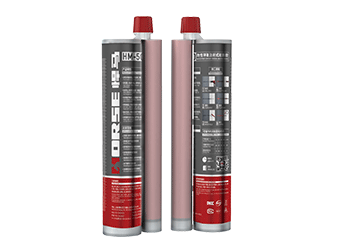Solutions
Horse Construction offers full range of structural strengthening materials with technical supports, documentation supports, products supports, project supports.
Are Structural Adhesives Harmful To The Human Body?
In the hot and hot summer, the physical safety and health of construction workers are of paramount importance.
So, are the adhesives commonly used in structural reinforcement harmful to the human body?
Some low-quality structural adhesives on the market will contain toxic substances such as benzene, toluene + xylene, halogenated hydrocarbons, and ethylene diamine. These toxic substances are extremely harmful to the human body.
High concentrations of benzene have an anesthetic effect on the central nervous system and cause acute poisoning. The main manifestations are as follows. Mild cases have headache, dizziness, nausea, vomiting, mild excitement, staggering gait and other drunken states. In severe cases, coma, convulsions, and blood pressure drop occur, leading to respiratory and circulatory failure. Long-term exposure to benzene can damage the hematopoietic system and cause chronic poisoning. The main manifestations are neurasthenia syndrome, hematopoietic system changes, white blood cell thrombocytopenia, aplastic anemia in severe cases, and a few cases of leukemia after chronic poisoning (acute granulocytes are more common). Skin damage includes degreasing, dryness, chapped, and dermatitis. Can cause increased menstrual flow and prolonged menstrual period.
Toluene is irritating to the skin and mucous membranes, and has an anesthetic effect on the central nervous system. Inhalation of higher concentrations within a short period of time can cause obvious eye and upper respiratory tract irritation, conjunctival and pharynx congestion, dizziness, headache, nausea, vomiting, chest tightness, weakness of the limbs, staggering gait, and confusion. Severe patients may have restlessness, convulsions, and coma.
Xylene has a stimulating effect on the eyes and upper respiratory tract, and has an anesthetic effect on the central nervous system at high concentrations. Inhalation of higher concentration of this product within a short period of time can cause obvious eye and upper respiratory tract irritation, conjunctival and pharynx congestion, dizziness, headache, nausea, vomiting, chest tightness, weakness of limbs, staggering gait, and confusion. Severe patients may have restlessness, convulsions, and coma. Long-term exposure has neurasthenia syndrome, female workers have abnormal menstruation, and workers often have dry skin, chapped skin, and dermatitis.
Ethylenediamine, a colorless or slightly yellow oily or watery liquid, has an odor similar to ammonia. It is strongly alkaline. (n26D)1.4540. Flammable. Low toxicity, LD50 (rat, oral) 1460mg/kg. Corrosive. Mainly used for solvents and analytical reagents. In case of open flames, high heat or contact with oxidants, there is a danger of burning and explosion. Reacts violently with acetic acid, acetic anhydride, carbon disulfide, chlorosulfonic acid, hydrochloric acid, nitric acid, sulfuric acid, fuming sulfuric acid, perchloric acid, fuming nitric acid, etc. Can corrode copper and its alloys. Its vapor is strongly irritating to mucous membranes and skin. Contact with the product vapor can cause conjunctivitis, bronchitis, pneumonia or pulmonary edema, and contact dermatitis may occur. Can cause liver and kidney damage. Direct contact with the skin and eyes can cause burns. This product can cause occupational asthma.
Halogens are highly toxic groups, and halogenated hydrocarbons are generally more toxic than parent hydrocarbons. After being absorbed by the skin, halogenated hydrocarbons invade the nerve center or act on internal organs, causing poisoning. Generally speaking, iodine hydrocarbons are the most toxic, and brominated hydrocarbons, chlorinated hydrocarbons, and fluorinated hydrocarbons decrease in order. Lower halogenated hydrocarbons are more toxic than higher halogenated hydrocarbons; saturated halogenated hydrocarbons are more toxic than unsaturated halogenated hydrocarbons; polyhalogenated hydrocarbons are more toxic than halogenated hydrocarbons with less halogen. The workplace where halogenated hydrocarbons are used should be well ventilated.
Therefore, when choosing a structural adhesive, be sure to check whether there is a test report.
Before a product is put on the market, it has to go through multiple process inspections and pass multiple national standards. For example, HORSE series adhesives must undergo the following tests in addition to safety identification testing:
Take the modified epoxy injection-type anchoring glue(HM-500) as an example
01 Mouse experiment
02 No ethylenediamine report
03 Non-toxic report
You can find anything here you are in need of, have a trust trying on these products, you will find the big difference after that.

Good impregnation carbon fiber adhesive for applying carbon fiber reinforced polymer(CFRP) wrap for structural strengthening

two-components modified epoxy resin adhesive, with high quality plastic tube, double cartridge package

Two-component epoxy modified epoxy structural strengthening adhesive for bonded steel plate to concrete